Rome, sweet Rome. The city has some of the world’s best-preserved buildings, papal basilicas, and incredible museums with history’s most famous paintings and ancient sculptures.
Also known as the Eternal City, Rome offers spectacular attractions and fantastic food that will capture the heart of anyone who visits. These are the best things to do in Rome.
Living in the South of France, I once spent almost an entire year visiting Rome once a month. It’s easy to fall in love with a city as beautiful as Rome that offers endless attractions, so much history of an ancient world, and delicious food. Rome attractions range from the world’s most-visited landmarks like the Trevi Fountain and The Colosseum to magical hidden gems like Largo di Torre Argentina and the Roman Catacombs.
From wandering the charming cobblestone streets while admiring the Italian-style architecture and impressive churches to sampling some of Italy’s best wine and food, here are the best things to see in Rome and attractions to visit that’ll have you living la dolce vita on your Roman holiday.

Take your time and explore the Vatican Museums with a skip-the-line ticket on a guided walking tour. Marvel at the intricate frescoes adorning the Sistine Chapel ceilings, wander through the courtyards of the Vatican complex with your guide and see the Raphael Rooms, which were commissioned by Pope Julius II during the early 16th century. You will also get to explore St. Peter's Basilica and see Michelangelo's Pietà.
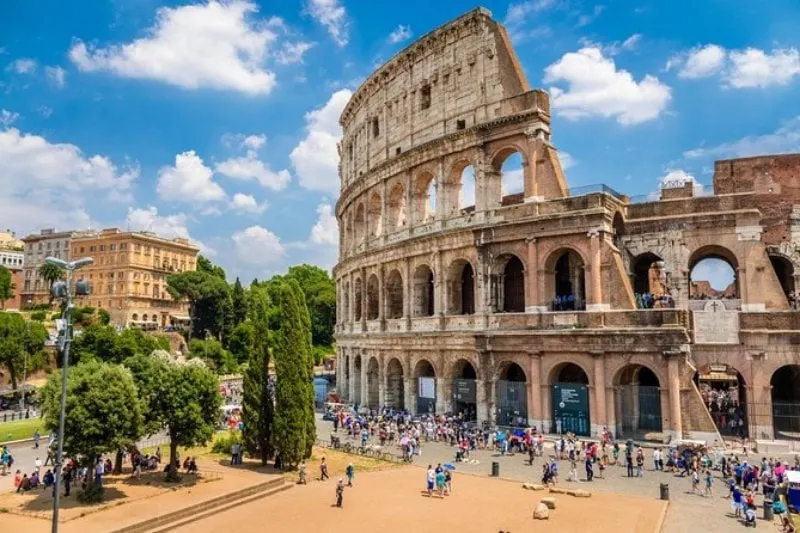
Skip the Line: Colosseum, Roman Forum and Palatine Hill Tour - Avoid the long entrance lines during this skip-the-line tour of the sights in ancient Rome. With a guide head into the Colosseum to walk in the footsteps of gladiators, emperors and plebeians as tales of the brutal games ring in your ears. Stroll amid the ruins of the Roman Forum, then discover layers of Roman history on Palatine Hill.
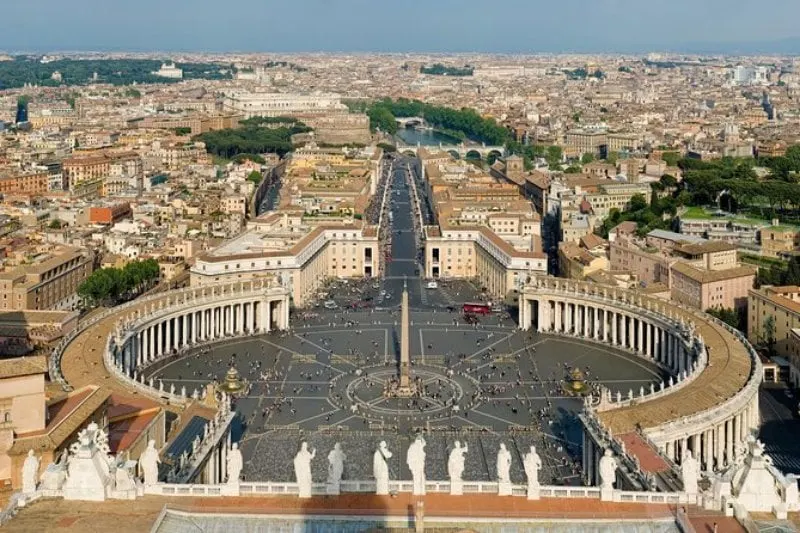
The Vatican City Tour guided by a certified guide is the best way to visit the Vatican. This tour allows you to skip the line and enter directly into the museums. You will have more than enough time to go through all of them, so you don't need to worry about rushing. You can even stay inside St. Peter's Basilica for as long as you want if you feel like praying or just taking some pictures.
TL;DR
- Most significant landmark – The Colosseum
- Best park – Villa Borghese
- Best free activity – St. Peter’s Basilica
- The best activity for kids – Trevi Fountain & Largo di Torre Argentina
- The best activity for adults – Roman Catacombs
- Best food – Sali & Tabacchi
- Best nightlife – Ice Club
- Best place to stay – Villa Agrippina Gran Meliá
Things to Do in Rome, Italy
1. Trevi Fountain
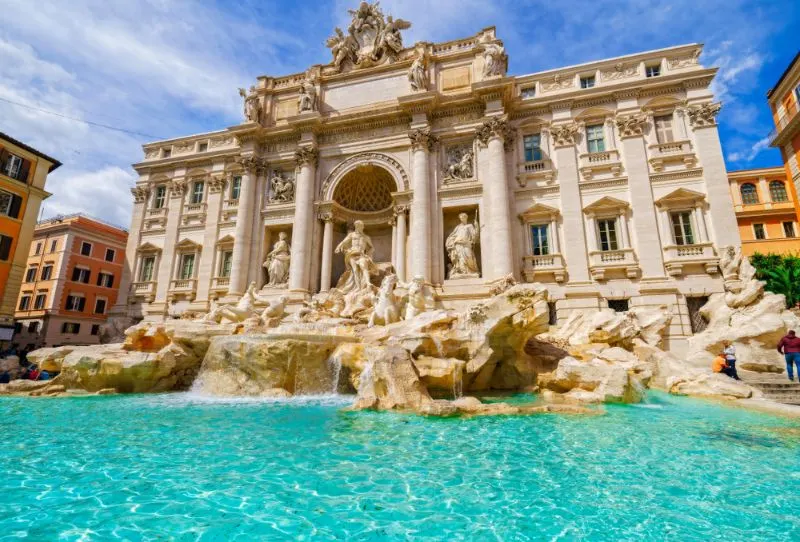
Address: Piazza di Trevi, 00187 Rome, Italy
First up on the list of things to do in Rome is the Trevi Fountain, known as the Fontana di Trevi in Italian. It is the largest Baroque fountain in the city and the most famous fountain in the world. The fountain was designed by Nicola Salvi and completed in 1762 and is located in the Piazza di Trevi, one of Rome’s most popular tourist destinations.
The fountain depicts Neptune, the god of the sea, surrounded by mermaids and tritons. It has become one of the most emblematic symbols of the Eternal City. One legend says that if you throw a coin into the fountain over your left shoulder, you are guaranteed a trip back to Rome.
Since this is such a popular tourist destination for those in the historic center of Rome looking to get a perfect selfie, it can get quite crowded. The best time to visit the fountain is first thing in the morning or later at night when the crowds have died down.
For a memorable stay in Rome, consider staying in this gorgeous vacation rental overlooking the Trevi Fountain. The views are unbeatable, and you’ll wake up to one of the city’s most famous landmarks.
2. Vatican Museums
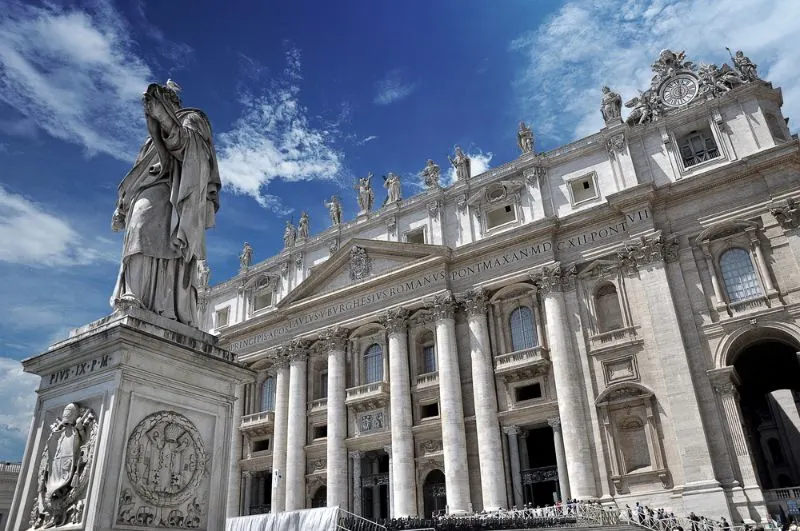
Address: Viale Vaticano, 00165 Rome, Italy
Another world-renowned attraction in Rome is the Vatican Museums. The museum complex is made up of over 54 galleries displaying over 70,000 artifacts and works of art.
Together, the museums house some of the most famous artworks in the world, including both the Sistine Chapel and the Raphael Rooms. Other unmissable works include an unfinished Leonardo da Vinci painting and St. Jerome in The Wilderness, also created by the famous Italian artist.
The Sistine Chapel is home to the world-famous frescoes by Michelangelo, which were painted onto the ceiling between 1508 and 1512. For those who want to admire the art and take a guided tour of the Vatican Gardens, it is recommended to book a tour in advance to avoid the long lines.
The Vatican Museums are located in Vatican City, the smallest country in the world, and also the headquarters of the Catholic Church. To enter, you must go to the entrance located outside of Vatican City, technically in Rome.
During your visit, you can admire St. Peter’s Square, and you will need to go through security before entering the museum complex. Photos are not permitted in the Sistine Chapel.
3. Piazza di Spagna
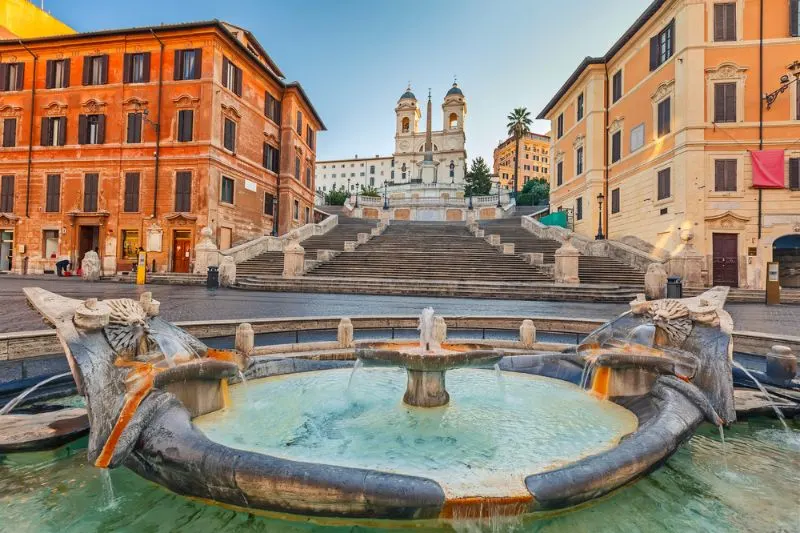
Address: Piazza di Spagna, 00187 Rome, Italy
The Piazza di Spagna, or Spanish Square, is one of the most popular tourist destinations in Rome. It is located in the center of Rome and is a short walk from many of the city’s other popular tourist destinations.
The square is also home to the beautiful Spanish Steps built in the 18th century. The Spanish Steps is one of the most photographed landmarks in the city, along with the Trinità dei Monti church, which sits above the steps.
The steps can get very crowded, so it is best to visit early in the morning or later at night when the crowds have died down. If you’re looking for a less crowded spot to relax in the Spanish Square, head to the left of the Spanish Steps, where you’ll find the beautiful Fountain of the Naiads. This fountain is often overlooked by tourists, so it’s a great place to relax and take in the beauty of Rome.
There’s also an amazing and underrated restaurant a few blocks from the steps called Sali & Tabbacchi. It’s located on Via di Campo Marzio and is actually half tabacchi, or tobacco shop, and half restaurant. Be sure to order the gnocchi alla Sorrentino and the lemon pasta. I eat here every time I visit Rome, and it never disappoints!
4. The Pantheon
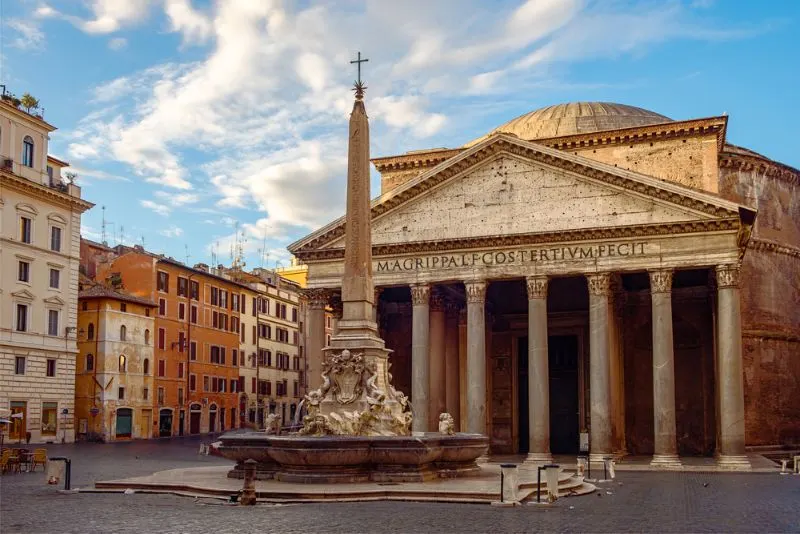
Address: Piazza della Rotonda, 00186 Rome, Italy
The Pantheon is one of the most well-preserved ancient Roman landmarks in the world. The ancient structure was built in 27 BC by Marcus Agrippa and is in Rome’s historic city center. It’s a massive structure with a large central dome and an impressive portico of granite columns at its entrance.
It was initially built as a temple to all the gods of ancient Rome, but it has since been converted into a Catholic church. It also serves as the final resting place for many Italian kings and other famous Italians, including the artist Raphael. The Pantheon is a must-see Rome monument for anyone interested in ancient history or architecture.
The Pantheon is free to enter. The best time to visit the Pantheon is during the day when the sunlight streams through the oculus, or hole in the center of the dome.
It’s (thankfully) one of the few Rome attractions that rarely has a long wait to enter. Enjoy lunch with a view of The Pantheon in the famous Piazza della Rotonda. Tempio Bar is great for drinks, while Di Rienzo Ristorante al Pantheon offers some of the best seafood and pasta in the city.
See Related: Best Day Trips from Rome, Italy
5. The Colosseum
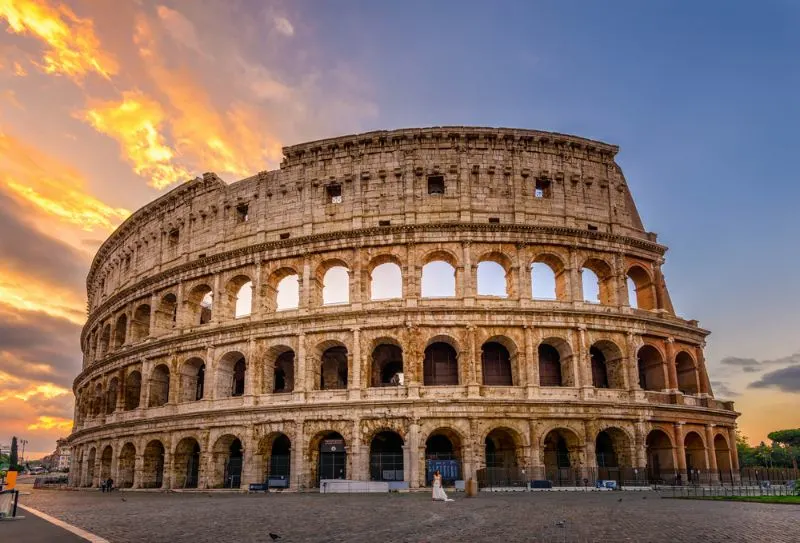
Address: Piazza del Colosseo, 1, 00184 Rome, Italy
The Colosseum is one of the world’s most ancient sites, iconic landmarks, and one of the most popular Rome attractions. The colossal stadium was built between 70 and 72 AD and is the largest Roman amphitheater in the world.
The Colosseum was used for gladiator fights, public executions, and other entertainment on the arena floor. Ancient Romans of all social classes of the Roman Empire would come to watch the events at the Colosseum. The Colosseum is now a UNESCO World Heritage Site and one of Rome’s most photographed landmarks.
You can book a skip-the-line ticket online in advance, so you can tour the Colosseum and arena floor without waiting in line! This combo skip-the-line ticket package includes no-wait entry to the Colosseum, the Roman Forum, and Palatine Hill. I highly recommend the package, that’s the option I went for, and it was worth it!
If you want to avoid the crowds at the Colosseum altogether, visiting at night provides stunning views. While you won’t be able to go inside after 3:30 pm, you can still walk outside the Colosseum and take in its impressive size. The golden lights gleaming inside the Colosseum make for a beautiful photo opportunity.
6. St. Peter’s Basilica
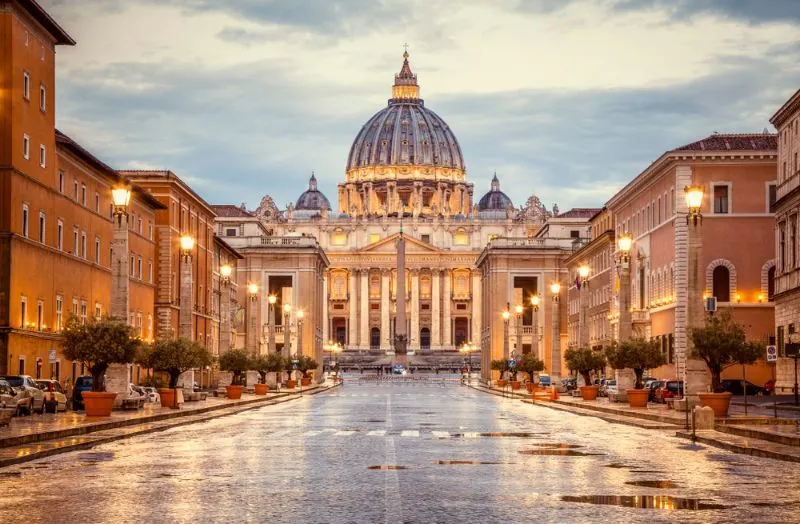
Address: Piazza San Pietro, 00120 Città del Vaticano, Vatican City
St. Peter’s Basilica is the largest church in the world and one of the most important sites in modern Catholicism.
The basilica is situated in St. Peter’s Square in Vatican City and was built between 1506 and 1626. This Renaissance-style church was built on the site of St. Peter’s tomb, which lies beneath the altar.
St. Peter’s Basilica is home to many famous works of art, including Michelangelo’s Pieta. The basilica’s interior is decorated with beautiful frescoes, mosaics, and sculptures.
Visitors can even climb to the top of the dome for a breathtaking view of Rome. If you have time, I also recommend taking a guided tour of the Vatican Gardens while you’re here.
Even if you’re not religious, I highly recommend visiting St. Peter’s Basilica. I’ve visited several times and got goosebumps being there every single time.
The interior of the church is so overwhelmingly beautiful. Plan to spend at least 20 minutes inside, more if you love admiring the intricate details of everything.
The basilica is free to enter, but visitors must follow a dress code. Women must have their shoulders and knees covered, and men must have their shoulders covered. The dress code is strictly enforced, so ensure you’re covered before you start your journey to Vatican City.
Because it is free to enter, you’ll most definitely have to stand in a long line. Wait times range from 30 minutes to up to two hours. If you don’t want to wait so long, there is a “skip-the-line” option for an additional fee.
With this ticket, you can go through a separate and shorter security line. It may be worth it in the high season. Otherwise, just try to arrive in the early morning. Nearby is the Villa Agrippina Gran Meliá, one of the most luxurious hotels in Rome.
See Related: How Much is a Trip to Italy: Average Cost Per Day
7. Roman Forum
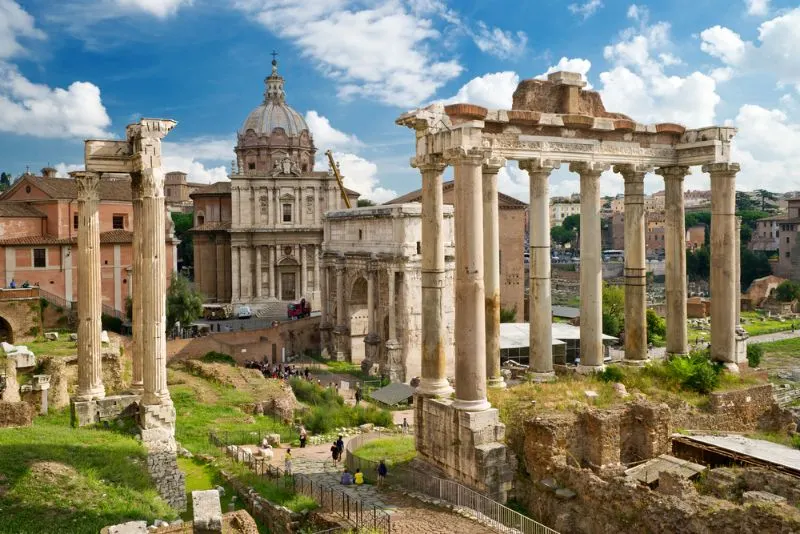
Address: Via della Salara Vecchia, 5/6, 00186 Rome, Italy
The Roman Forum was the center of ancient Rome and was used for political, economic, and religious purposes. Historians believe that the first use of this ancient open-air forum was around 500 B.C., when it served as a marketplace. Eventually, it housed the most important government buildings in ancient Rome.
Many famous landmarks are in the Roman Forum, including the Arch of Septimius Severus and the Temple of Saturn. Visitors can explore the ruins of ancient temples, basilicas, and other buildings.
The ruins are an excellent place to learn about Rome’s history and imagine what life was like in ancient times. Seeing the ruins for the first time was truly inspirational and was like instantly being transported back in time. You can explore the site yourself on a self-guided tour or opt for one of the amazing guided tours available, where you’ll learn the incredible history that took place here.
The Roman Forum never gets overly crowded, so it’s fine to visit at any time of day. Be sure to wear comfortable walking shoes, and if you’re visiting in the summer, you’ll want to wear a hat and sunscreen and keep hydrated.
8. Piazza Navona
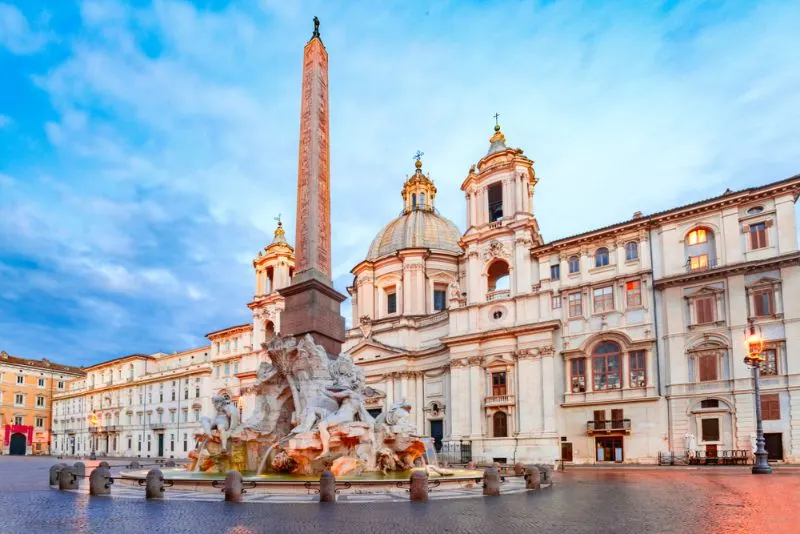
Address: Piazza Navona, 00186 Rome, Italy
Piazza Navona is a bustling square located in the center of Rome and features a number of incredible restaurants and shops. This beautiful piazza was built on the site of a stadium that was used for Ancient Roman athletic games and is home to three fountains, including the famous Fountain of Four Rivers.
The fountain was designed by Gian Lorenzo Bernini and completed in 1651. It features four statues that represent the major rivers of four continents: the Nile, the Ganges, the Danube, and the Rio de la Plata. The other fountains located in the square are the Fountain of Neptune and the Fountain of the Moor.
There are also several iconic restaurants and cafes located around the piazza, making it a great place to relax and people-watch as you explore Rome. There are almost always street performers in the square as well.
Check out the nearby restaurant Ginger Sapori e Salute, which serves delicious Italian food with a modern twist. They serve healthy breakfast, lunch, and dinner options, as well as a variety of drinks.
See Related: Best Restaurants in Italy
9. Palatine Hill
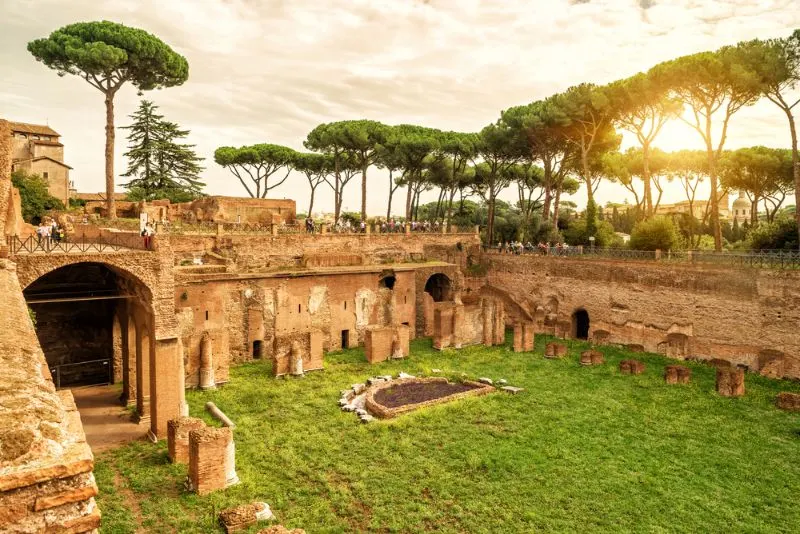
Address: 00186 Rome, Metropolitan City of Rome, Italy
Located just next door to the Roman Forum is Palatine Hill, another must-see attraction in Rome. The ruins of this area are the centermost of the Seven Hills of Rome and are the most ancient ruins in the city. It’s one of the city’s oldest parts and is just a short walk from the Colosseum.
Palatine Hill was once home to some of Rome’s wealthiest citizens, including emperors and aristocrats, and it is now one of the most popular tourist attractions in the city. Visitors can explore the ruins of ancient palaces, temples, and homes.
Climbing up to the top of this hill to catch sunset views over the city after exploring the nearby Colosseum and Roman Forum makes for an amazing memory of Rome. There’s just something so magical about this place.
Admission tickets also include entry to the forum, so I recommend visiting both sites in one day. I recommend visiting in the late afternoon so that you can stay for sunset and enjoy the cooler weather.
10. Baths of Caracalla
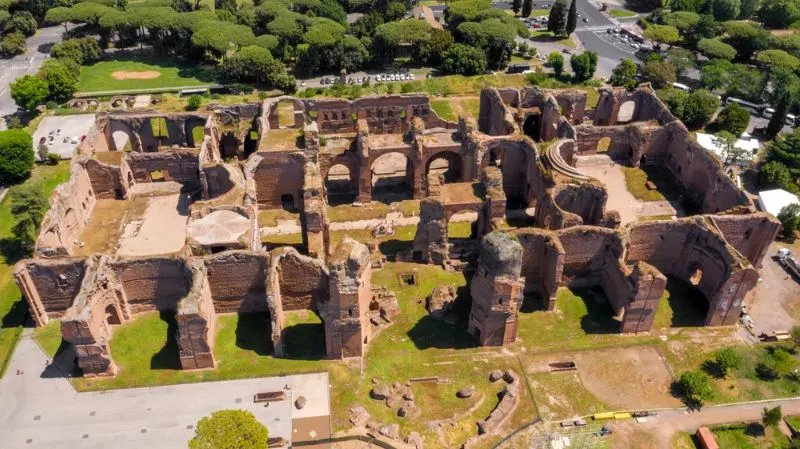
Address: Viale delle Terme di Caracalla, 00153 Rome, Italy
The Baths of Caracalla are some of the most well-preserved ruins in Rome. These ancient Roman baths were built between 206 and 216 AD and could accommodate up to 8,000 people at a time! It’s one of the more unique ruins to see and is not as visited as the Colosseum or Roman Forum since it is not exactly in the city center.
At their peak, the baths were used for public bathing, socializing, and relaxing. It was commonplace for Roman citizens to visit the baths daily. The Baths of Caracalla were in use until around the 530s AD, when they were finally abandoned and fell to ruin.
The Baths of Caracalla are now a popular tourist attraction in Rome. Visitors can explore the ruins of the ancient baths, including the gymnasium, library, and changing rooms.
I recommend buying your ticket in advance so you can skip any lines. There is also a small museum on site that contains artifacts found during the bath excavation.
Although this is still one of the more popular things to do in Rome, it never gets too crowded, so it’s great to explore at your own pace and offers wonderful photo opportunities.
See Related: Best Travel Books for Italy
11. Piazza del Popolo
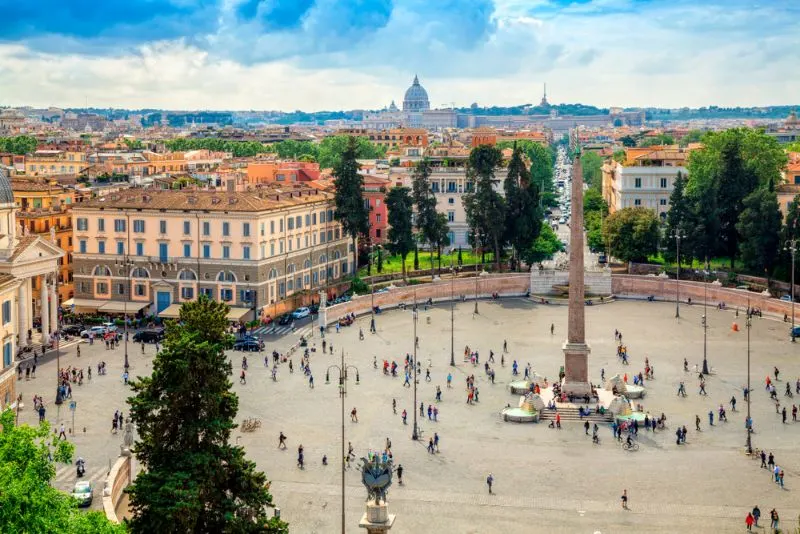
Address: Piazza del Popolo, 00187 Rome, Italy
The city of Rome is full of public squares that are perfect for taking a break in between tourist attractions. One of them is Piazza del Popolo, located at the end of Via del Corso, the main street in the historical center of Rome. Translating to “the People’s Square” in English, Piazza del Popolo is one of Rome’s most iconic squares and was once the city “gate” that welcomed visitors to ancient Rome.
Piazza del Popolo is a popular gathering place for locals and tourists alike. The piazza also hosts several events throughout the year, including concerts, festivals, and markets. The square has local shops, cozy cafes, museums, and churches.
The square is characterized by two large churches on opposing sides – Basilica di Santa Maria in Montesanto and Basilica Parrocchiale Santa Maria del Popolo. Both are known for their major works of art and are easy to visit back to back. Next to the Basilica Parrocchiale Santa Maria del Popolo, you’ll also find the Museo Leonardo da Vinci, a museum dedicated to one of the greatest Italian artists ever.
The square is also close to popular tourist attractions such as Villa Medici and the Borghese Gallery and Museum. Because of its centrally connected location, I highly recommend staying nearby at the Le Meridien Visconti Rome.
12. Castel Sant’Angelo
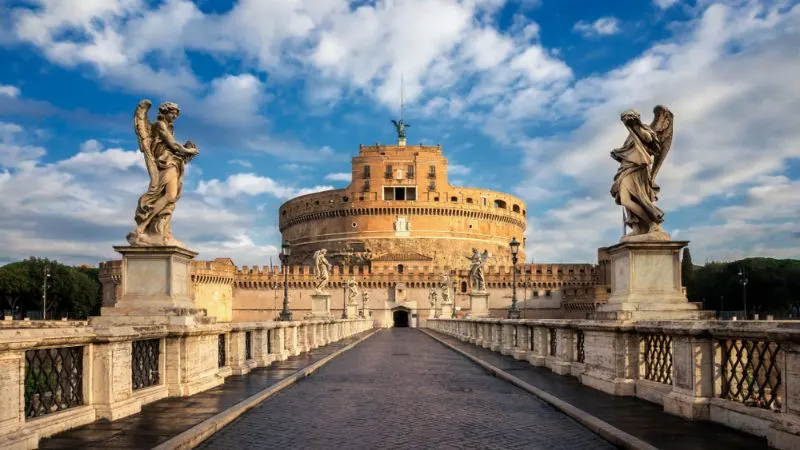
Address: Lungotevere Castello, 50, 00193 Rome, Italy
Originally built in the second century, Castel Sant’Angelo is a towering cylindrical castle that sits on the banks of the Tiber River. This castle was originally built as a mausoleum for Roman Emperor Hadrian and his family.
In the 14th century, Castel Sant’Angelo was converted into a fortress and later used as a prison. Today, this castle is a museum that is open to the public.
The museum contains many artifacts from the castle’s long history, as well as exhibitions on the prison, Vatican City, and more. When deciding on tickets, I highly recommend choosing a guided tour. There’s lots of history and information to learn here, so it’s better (and easier) to get it all from an expert guide.
Explore the castle’s ramparts for breathtaking views of Rome, or walk through the underground tunnels that once served as a secret escape route for the Pope! The castle was, in fact, once used as a papal residence. This Rome attraction is rich in history and makes for a fascinating visit.
I recommend buying a ticket in advance online to avoid the lines at the ticket office – like most attractions in Rome, Castel Sant’Angelo can get pretty crowded. Visiting Castel Sant’Angelo is one of my favorite things to do in Rome. The stunning panoramic views from the castle’s rooftop terrace (especially at golden hour) are unbeatable and so magical!
See Related: Best Car Museums in Italy
13. Basilica Papale di Santa Maria Maggiore
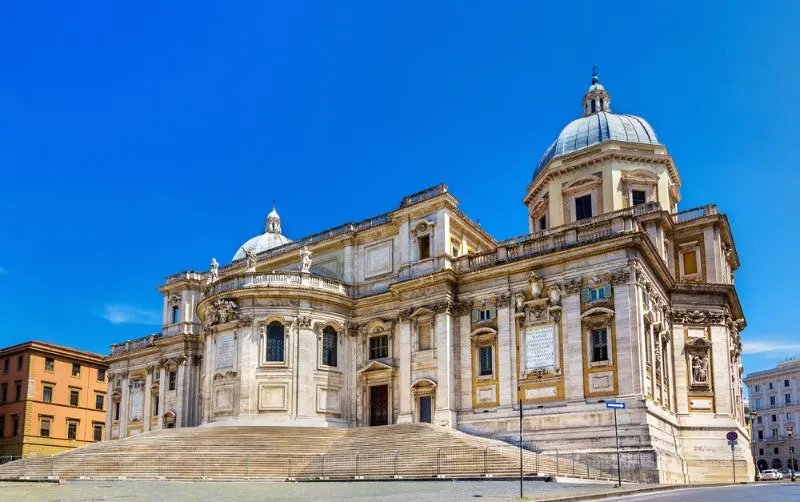
Address: Piazza di Santa Maria Maggiore, 00100 Rome, Italy
It’s no surprise that there are several beautiful churches and cathedrals scattered throughout the ancient Catholic city of Rome. One of the most significant is the Basilica Papale di Santa Maria Maggiore, one of Rome’s four major basilicas. It’s also known as one of the Seven Pilgrim Churches of Rome.
The church is also known as “Our Lady of the Snows” because legend has it that snow fell on the church’s site in August of 352, leading to the construction of this basilica. The church’s exterior is adorned with beautiful mosaics, and the interior is just as stunning.
The gilded ceiling was created with some of the first gold brought back from America by Christopher Columbus. This basilica also contains some important works of art, including a painting by Raphael.
The Basilica Papale di Santa Maria Maggiore holds the tombs of several popes and many other famous Italians. The bell towers of the church, dating back to the fourteenth century, are among the tallest towers in Rome.
Visiting the Basilica Papale di Santa Maria Maggiore is free, but there is a small fee to enter the museum. Definitely worth the price! At the museum, visitors can learn more about the church’s important history and admire more works of art that were part of the church. The church is easy to find as it is just a few blocks from Rome’s main train station, Rome Termini.
14. Galleria Borghese and Villa Borghese Garden
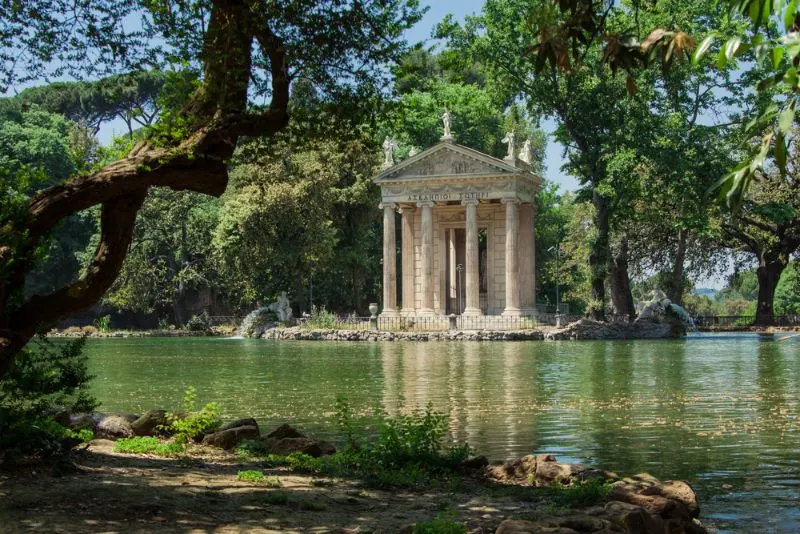
Address: Piazzale Scipione Borghese, 5, 00197 Rome, Italy
If you’re searching for things to do in Rome with kids or just want a break from endless museums and hundred-year-old ruins, consider spending a day at Villa Borghese. This huge park is one of the largest parks in Rome, and it’s a great place to relax, take a walk, or have a picnic.
The park also contains several museums, including the Galleria Borghese (Borghese Gallery), which houses an impressive collection of art. The gallery’s collection includes major works of art from the Renaissance, Roman, and Baroque periods. If there’s just one art museum to visit in Rome, this is it.
Villa Borghese is huge, so there’s plenty of space to explore, and it provides a great opportunity to learn about Roman history and culture. The park is home to an impressive garden, a lake, and several monuments. The Villa Borghese Gardens spread out across just under 20 acres, making them some of the largest gardens in Rome!
If you’re traveling with kids, they’ll love spending a day at the park. Within the park is Bioparco di Roma, a decent-sized zoo with a fantastic educational program. Your family can also enjoy a picnic in the park in its many grassy areas.
The park is located in the center of Rome, just a few steps away from the Spanish Steps and Piazza del Popolo. You can easily pop over to the park for a few hours or spend an entire day exploring everything it has to offer.
See Related: Italy vs Greece: What’s the Difference?
15. St. Clement Basilica
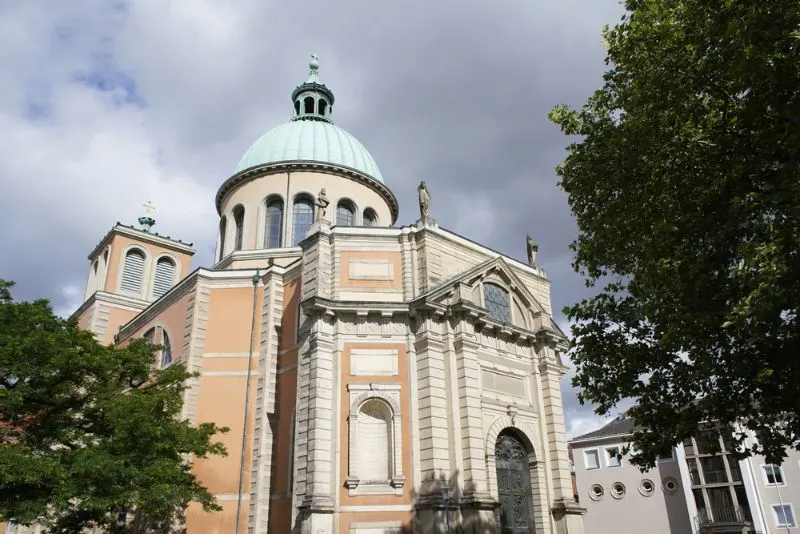
Address: Via Labicana, 95, 00184 Rome, Italy
This basilica is particularly interesting because it sits on top of two other churches – one from the 12th and fourth centuries. That’s right, three churches in one! This church is just a five-minute walk from the Colosseum, making it a great place to visit after seeing some of Rome’s top attractions.
A visit to St. Clement’s Basilica is a great way to learn about the history of Christianity in Rome. The 12th-century church was built on top of the ruins of a fourth-century church, built on top of a Roman house from the first century, which is also believed to be a Pagan temple.
This makes St. Clement’s Basilica one of Rome’s most layered and interesting sites! St. Clement’s Basilica was built in honor of Pope Clement I and contains several important works of art. It’s an important pilgrimage site for many Christians and a place many art scholars dream of visiting.
The basilica is free to enter, and a small museum is on site. The museum contains several artifacts from the different churches that have been located on the site, as well as some Roman ruins. You can also take a guided tour of the excavations beneath the church.
16. Largo di Torre Argentina
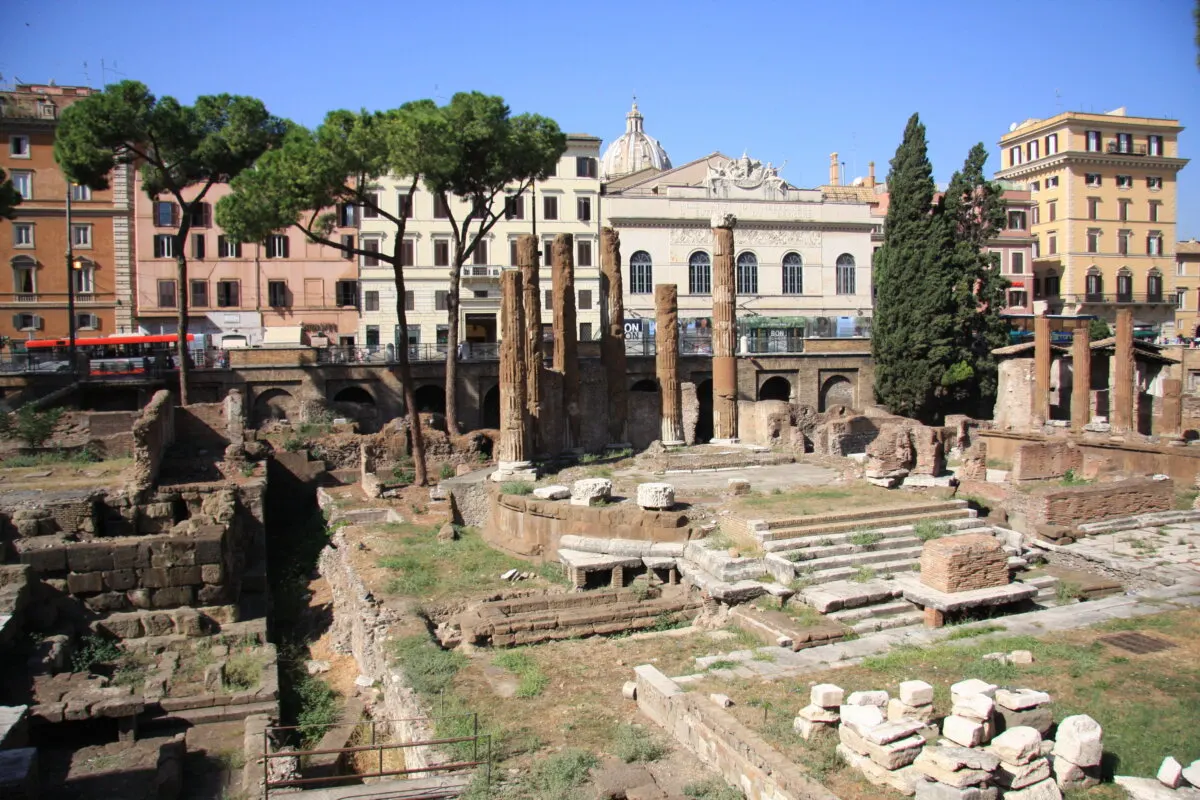
Address: Largo di Torre Argentina, 00186 Rome, Italy
If you or your kids are animal lovers, you have to check out Largo di Torre Argentina, located just a few blocks away from the Pantheon. These incredible ruins now serve as an awesome cat sanctuary.
Still, it’s also the site of one of the most important moments in ancient Roman history – the murder of Julius Caesar. So even if you’re not partial to making feline friends, it’s still an interesting place to check out.
Now back to the cats. The ancient ruins serve as a sanctuary for the city’s homeless and abandoned cats and kittens.
Many of these cats have special needs, are missing limbs, or are just in a rough shape. Fortunately, the cats that come here are well cared for by the selfless volunteers. There’s a small office with plenty of cat beds and an adoption area.
When my husband and I visited Largo di Torre Argentina, it was really hard for us to leave. While some cats are a bit weary of strangers, many are so loving and adorable. During your visit, don’t forget to purchase a magnet or tote bag to help support these lovely animals!
17. Circus Maximus
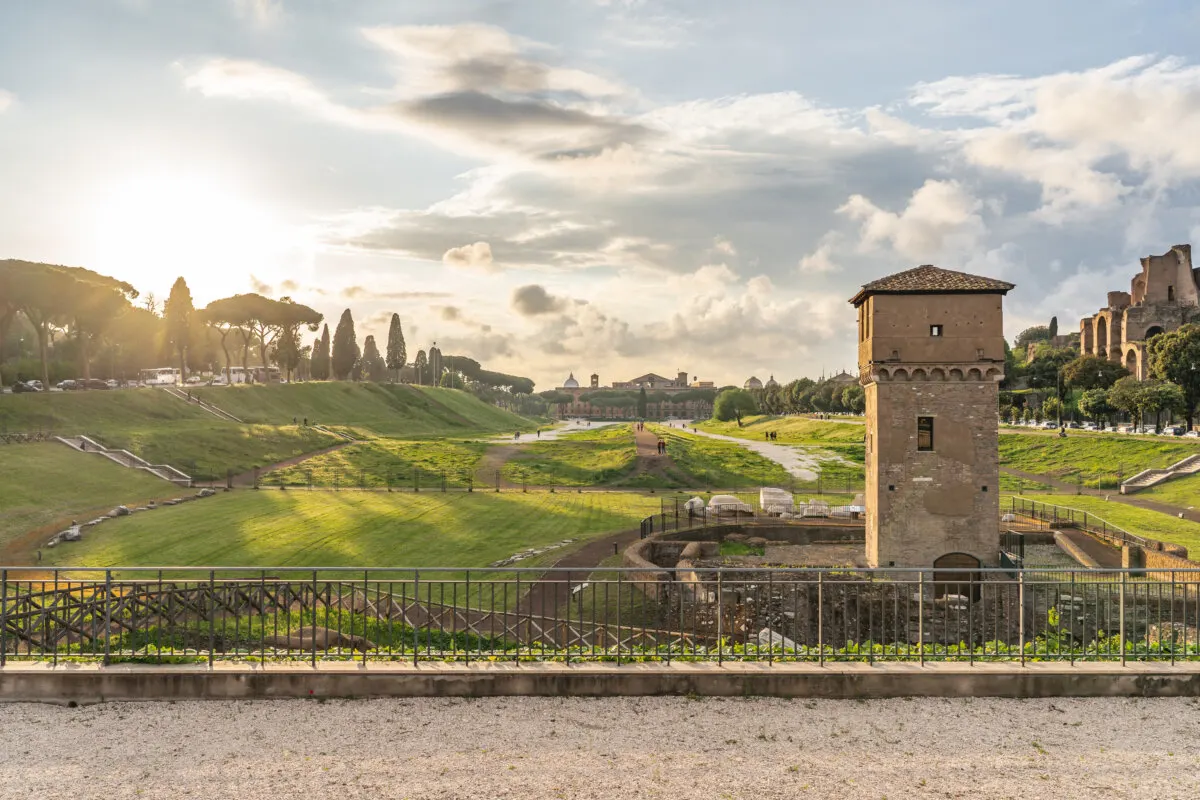
Address: Via del Circo Massimo, 00186 Rome, Italy
The Colosseum isn’t the only place where ancient Romans enjoyed some entertainment. Circus Maximus, located on the opposite side of Palatine Hill from the Colosseum, was another popular place for Romans to be entertained. It was the first and largest stadium built during the Roman Empire.
Spectators at Circus Maximus could enjoy chariot racing, gladiator battles, and animal fights. The stadium, at its peak, could accommodate more than 150,000 people – three times more than the Colosseum, which was actually built after Circus Maximus. Circus Maximus shortly fell into ruins once the Colosseum was built.
Today, Circus Maximum is a wonderful park with lots of ruins and history to discover. Occasionally, concerts and events are still held at this historic stadium. Circus Maximus is free to enter, but if you’d like to learn more about the history from an expert guide, a guided tour is available for a fee.
18. Basilica of Our Lady in Trastevere
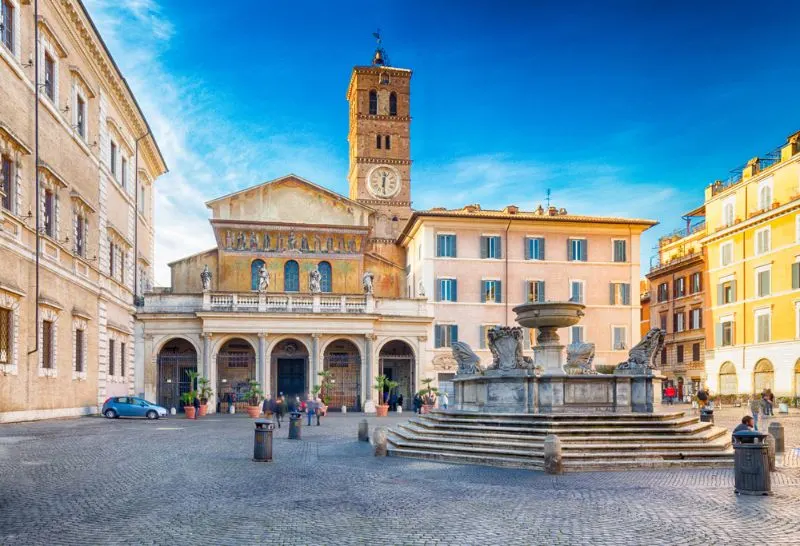
Address: Piazza di Santa Maria in Trastevere, 00153 Rome, Italy
The Basilica of Santa Maria in Trastevere is said to be one of Rome’s oldest (if not the oldest) churches. The church was built in the third century, and it’s been a place of Christian worship ever since. One significant point of the church is that it was built during a time when Christianity wasn’t widely accepted in the Roman Empire.
The Basilica of Santa Maria in Trastevere is known for its beautiful mosaics dating back to the 12th century. The mosaics depict scenes from the life of Mary, and they are stunning.
Visitors can also explore the crypt, which contains the tomb of Pope Callixtus I, who commissioned the church to be built. An hour spent exploring this museum is a must for anyone interested in Roman history or art.
The Basilica of Santa Maria in Trastevere is open daily, with no entry fee. Mass is held several times daily, and the church is also a popular place to visit for confessions and spiritual guidance.
The church is located in the Trastevere district, one of Rome’s most charming neighborhoods. Today, it is surrounded by many of the city’s best restaurants and bars, including Nannarella Osteria, Tonnarello, and Taverna Trilussa.
See Related: Things to Do in Ravello, Italy
19. Take a walking food tour
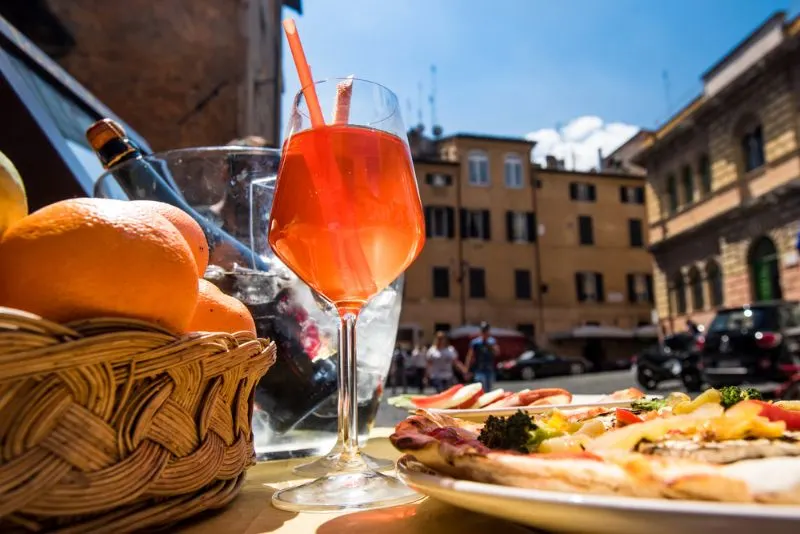
If you’re anything like me, food is one of the main reasons you travel, and Rome is an incredible place to eat! The food is absolutely delicious, and there are enough restaurants and cafes in Rome to last you for an eternity. Hey, they don’t call it the Eternal City for nothing!
One of the best ways to experience the food of Rome is by taking a walking food tour. A walking food tour of Rome will take you to some of the best eateries around town, and you’ll get to try things like freshly made pasta, gelato, and Roman street food. You’ll get to try all sorts of traditional Roman dishes, and you’ll also learn about the history and culture of food in Rome.
I love going on food tours because you’ll get to sample the most popular foods, but you’ll also have the opportunity to learn about some of Italy’s lesser-known dishes. This is a great way to get an insider’s look at the food scene in Rome, and it’s a lot of fun.
Food tours are a great way to get an authentic and delicious taste of Rome and experience the food of Rome like a local. And for a more hands-on experience, consider taking a cooking class. You’ll learn how to make some of Rome’s most popular dishes, and you’ll get to eat what you make.
See Related: Best Tours in Italy
20. Roman Catacombs
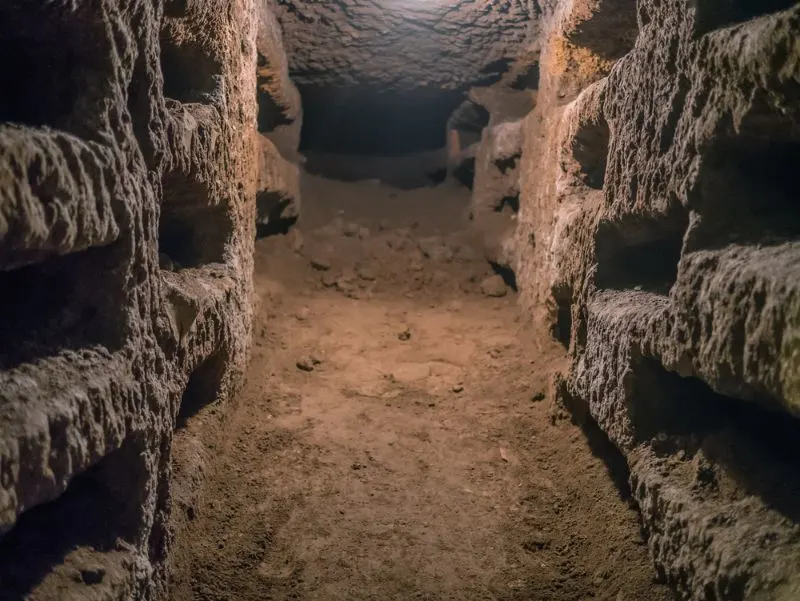
Address: Via Appia Antica, 110/126, 00179 Rome, Italy
For a spooky and unique experience, consider visiting the Roman Catacombs. The catacombs are a series of underground tunnels and burial chambers used by the ancient Romans.
These ancient burial sites are located outside the city center and are a great place to visit if you’re interested in Roman history or archaeology. The Roman Catacombs are most notable for the Crypt of Popes, which contains the remains of several Roman popes from the second to fourth centuries.
The best way to see the catacombs is on a guided group tour. Tours typically last around two hours, and they include a visit to the Catacomb of Callixtus, which is the largest catacomb in Rome. The Catacomb of Callixtus contains the remains of over half a million people, making it one of the largest burial sites in the world! Another popular catacomb is the Capuchin Crypt, which holds the bones of over 4,000 Capuchin monks.
Visiting the Roman Catacombs is a great way to learn about Roman history and culture. It’s also a unique way to get away from the hustle and bustle of Rome and explore some of the city’s more hidden and unusual attractions.
See Related: Best Things to Do in Bolzano, Italy
21. Piazza Venezia
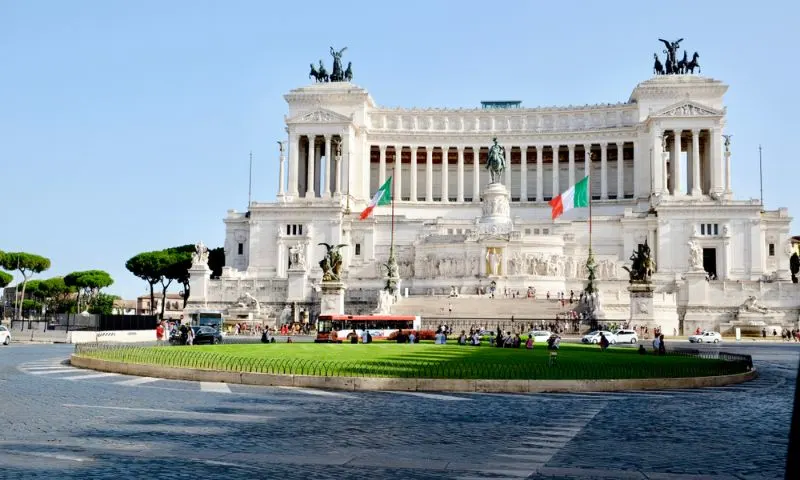
Address: Piazza Venezia, 00186 Rome, Italy
Another famous square in the Eternal City is Piazza Venezia. This plaza is located in the city center of Rome, and it’s one of the most popular tourist destinations in the city and, I personally believe, the most beautiful piazza. Piazza Venezia is home to several famous landmarks, including the Victor Emmanuel II equestrian statue and the Palazzo Venezia.
The Victor Emmanuel II Monument is a large and impressive white marble structure that was built in honor of the first king of a unified Italy. The Palazzo Venezia is a beautiful 15th-century palace that now houses a museum. Romans jokingly refer to it as “the wedding cake”.
Piazza Venezia is filled with Roman history and architecture. If you’re visiting Rome during the summer, be sure to visit Piazza Venezia at night – the plaza is beautifully lit up, and it’s a great place to enjoy the evening atmosphere of Rome. It’s located right in the middle of St. Peter’s Basilica and the Colosseum, so you’ll definitely pass by if you’re traveling through the city on foot.
There are also several chic cafes and restaurants located around Piazza Venezia, so it’s a great place to grab a bite to eat or have a drink between all your Rome sightseeing adventures. Piazza Venezia is one of the best places to try traditional Italian food; restaurants La Cabana and Zerosettantacinque are two of the best.
22. Ice Club
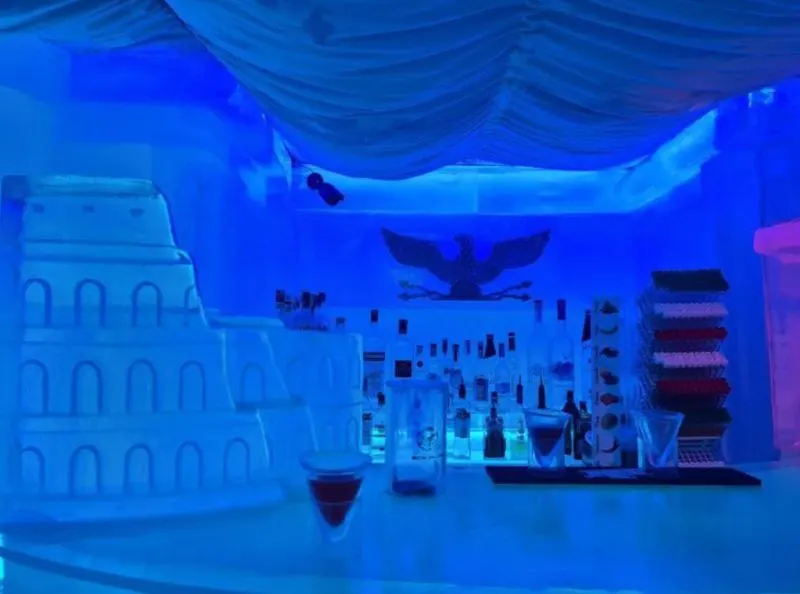
Address: Via della Madonna dei Monti, 18/19, 00184 Rome, Italy
When it comes to nightlife, the Romans know how to party! There are a lot of great bars and clubs located around Rome, and Ice Club is one of the best. This club is located in the Monti district and is known for its amazing cocktails and cool, trendy vibe.
This club is equipped with frosty decor and even has furniture made out of ice. One of the best things about Ice Club is that it’s open daily, so you can party all night long, any time of the week.
It’s also the only club of its kind in Rome! The club also has a great selection of music, and the DJs always keep the crowd dancing.
It’s also near other popular bars and clubs, so you can easily bar-hop around Rome. I also recommend checking out Yellow Bar and Sharivari if you love to experience the nightlife when visiting a new city.
See Related: Best Places to Visit in Northern Italy
23. Take a walking tour of Centro Storico
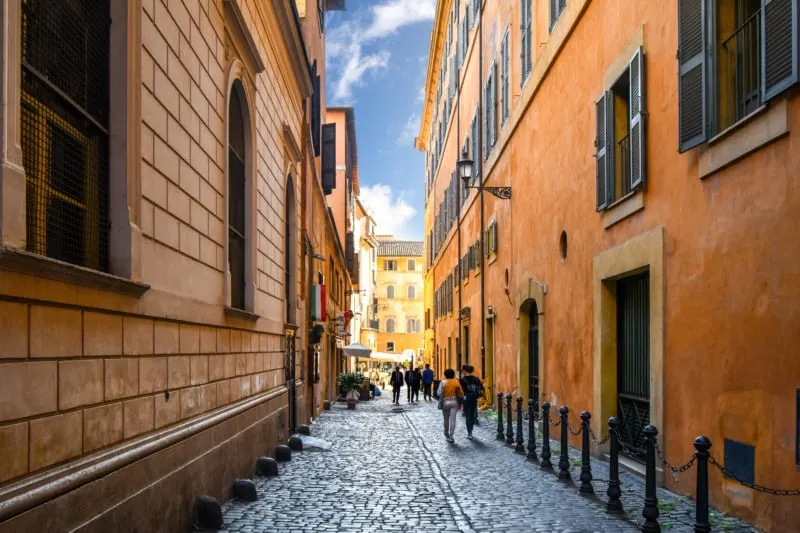
One of my favorite things to do in any city in Italy is wander the streets and take in the sights, chaos, history, and of course, the smells of the amazing food. Centro Storico (historical center in English) in Rome is exactly that; it explores the sights, sounds, and smells of the city’s past.
Stroll through its cobblestone streets, beginning at Piazza Popolo, to discover hidden gems around every corner. Travel down three major streets extending from Piazza Venezia and the Colosseum before venturing onto dozens of avenues and byways. No matter how you turn, you’ll find awe-inspiring architecture and mouthwatering gelato.
Marvel at Baroque-style churches and shop along centro storico’s boutiques offering unique wares—from handmade wood carvings to luxury jewelry that will make lovely souvenirs and gifts. Don’t forget to peep into ancient private courtyards, where locals live out their version of La Dolce Vita. Take some time to follow in the footsteps of Romans for a truly unforgettable experience.
24. Ascend Janiculan Hill for panoramic views of Rome
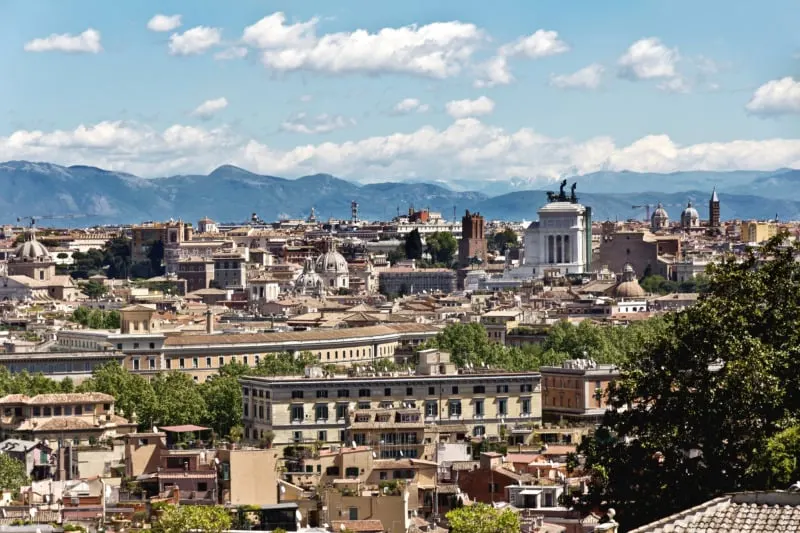
Address: via Garibaldi, Salita di Sant’Onofrio, 00165 Rome, Italy
The Janiculum, or Janiculan Hill, offers some of the most dreamy views of Rome. Climb the long and rocky road up the mountain and be awestruck by the panoramic views of some of the city’s most majestic sites.
Admire the Spanish Steps from up high, see the Palace Venezia in all its glory, and take a second to appreciate being in such an amazing city. Though it’s the second-largest hill in modern Rome, it’s not counted as one of the “Seven Hills of Rome” as it sits on the outskirts of the ancient city.
As night falls, lovers gather around this sacred spot for an enchanting moment together as street sellers attempt to provide glowing tchotchkes to those who trek up the hill. But don’t lose sight of why you are there- for unforgettable sweeping views no other hill in Rome can provide.
The hill is just above the Trastevere neighborhood, known for its long list of incredible bars and restaurants. It’s easy to grab a table for a romantic dinner after watching the sunset over the Eternal City with the one you love.
25. Visit Capitoline Hill
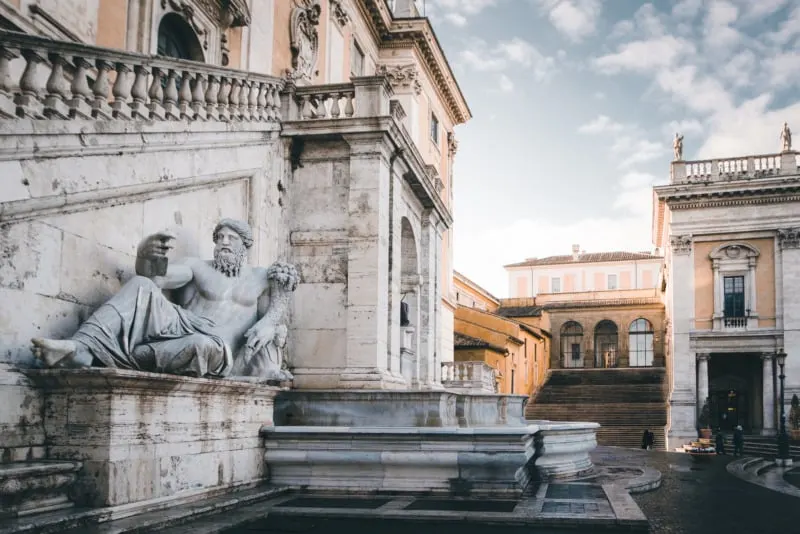
Address: Piazza del Campidoglio, 00186 Rome, Italy
The historic Capitoline Hill is the proud home of two renowned public art collections found in Rome. The Capitoline Museum is the star of Capitoline Hill and has been established since 1471. The museum hosts a variety of iconic sculptures, notably Praxiteles’s fourth-century BC masterpiece, Boy with Thorns, crafted from Bronze.
For something more contemporary, check out Gian L. Bernardin’s 17th-century Medusa sculpture heads – an example of Baroque sculpting perfection. This area is also one of the most ancient sites in all of Rome, making it a must-see for first-time visitors to the Eternal City.
The Capitoline Museum is part of a larger system of municipal museums called theCapitoline Museums, the largest of which is the Capitoline Museum. There are 20 museums in the system, including nine archaeology museums, seven modern art museums, two contemporary art museums, and two science museums. If you love learning about archaeology and history through art, exploring the various Capitoline Museums is one of the best things to do in Rome.
Tickets for the Capitoline Museum are cheaper if you buy them in advance online as opposed to buying them at the museum. Additionally, there is a Capitolini Card, valid for one week and allows you admission into multiple museums and exhibitions for a discounted price.
26. Campo de’ Fiori
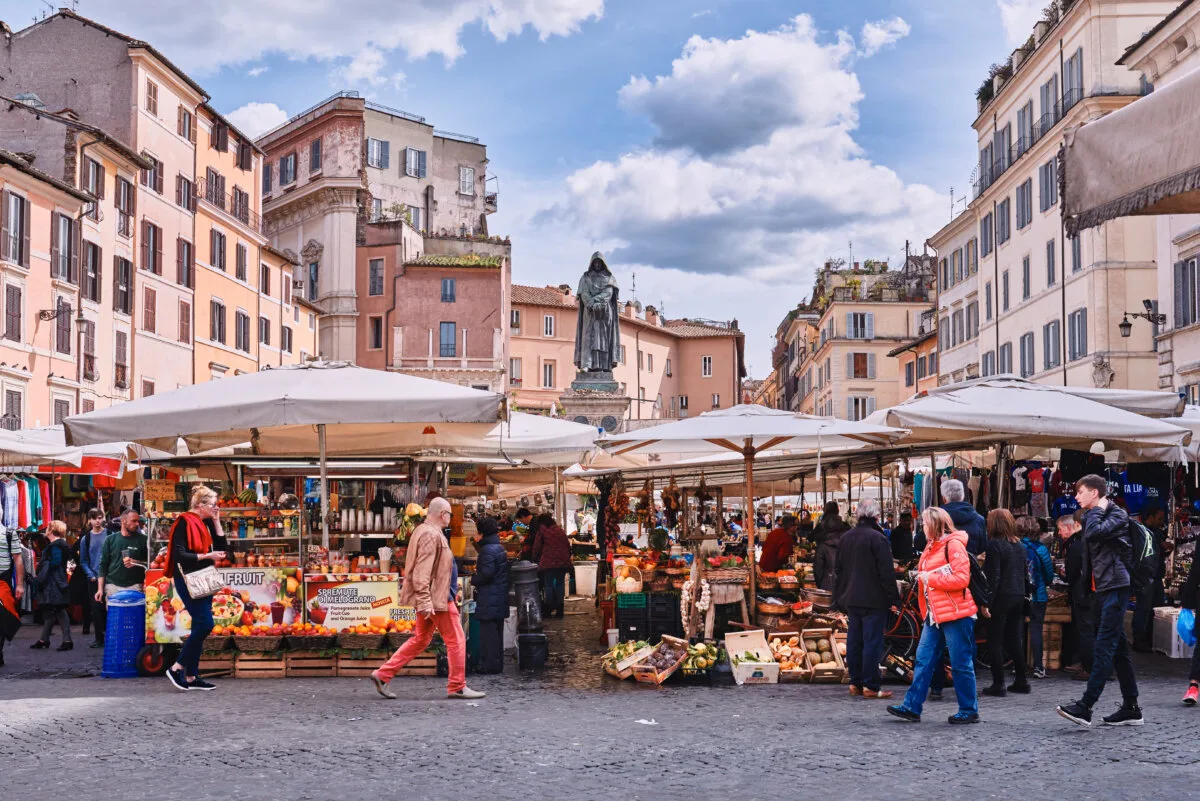
Address: Campo de’ Fiori, 00186 Rome, Italy
In Rome’s city center, Campo de’ Fiori is one of the city’s main squares. The square has shops, restaurants, bars, and small hotels.
Its name means “field of flowers,” which it was during the Middle Ages. Today, the square is most well-known for its fantastic morning market every Monday through Saturday.
The market has amazing stands with local vendors selling fresh flowers, fruit, vegetables, and other local products. This is a fantastic place to get a real sense of the city and its residents. You can also find amazing gifts to bring back from Rome!
In the evening, the square is even more lively, with locals and tourists filling every seat at the terraces of the surrounding bars and restaurants. If you’re a fan of thin-crust pizza, I highly recommend stopping by Mariuccia. For dessert, stop by Forno Campo de’ Fiori for some seriously delicious Italian sweets.
27. Grab a gelato at Venchi
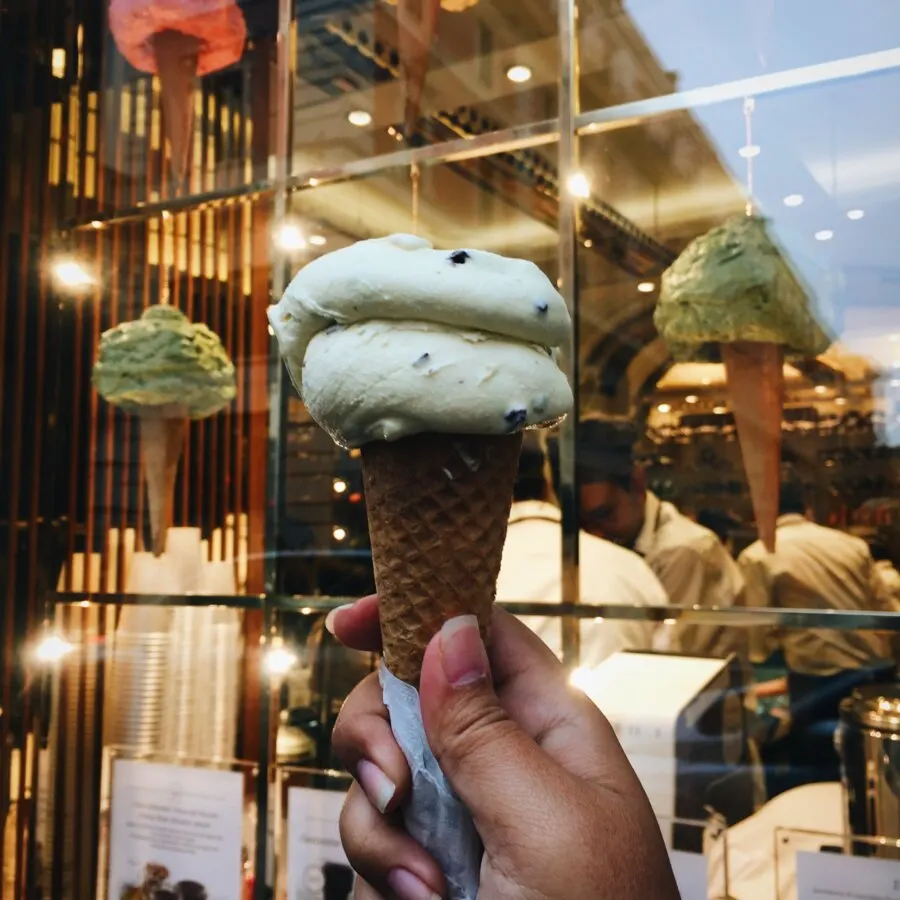
Address: Via del Corso, 335, 00186 Rome, Italy
Gelato shops are a dime a dozen in every major Italian city. But my favorite one of all is Venchi. It’s a chain gelato shop, but I still highly recommend it.
Venchi originally started as a chocolate shop in the city of Turin in 1878. The company branched into gelato in 2007 and expanded to locations in over 70 countries.
My favorite part of Venchi is its whopping 90 different gelato flavors. You can find anything from basic pistachio to more complex flavors like tangerine with almond and mascarpone with candied figs.
Despite being a large chain, Venchi sticks to the true Italian traditions when producing their gelato. While I love trying their unique flavors, I usually get my favorites – stracciatella or strawberry.
The decor of this gelato shop makes you feel like you’re in the Sistine Chapel – no, seriously. It’s stunning. Not to mention the mesmerizing chocolate waterfall wall that sits behind the display of mouthwatering gelato offerings.
I’m not gonna lie – Venchi is no secret to tourists. Be prepared to stand in line for a long time, especially in the spring and summer. I promise it is worth the wait, though!
28. Castel Gandolfo
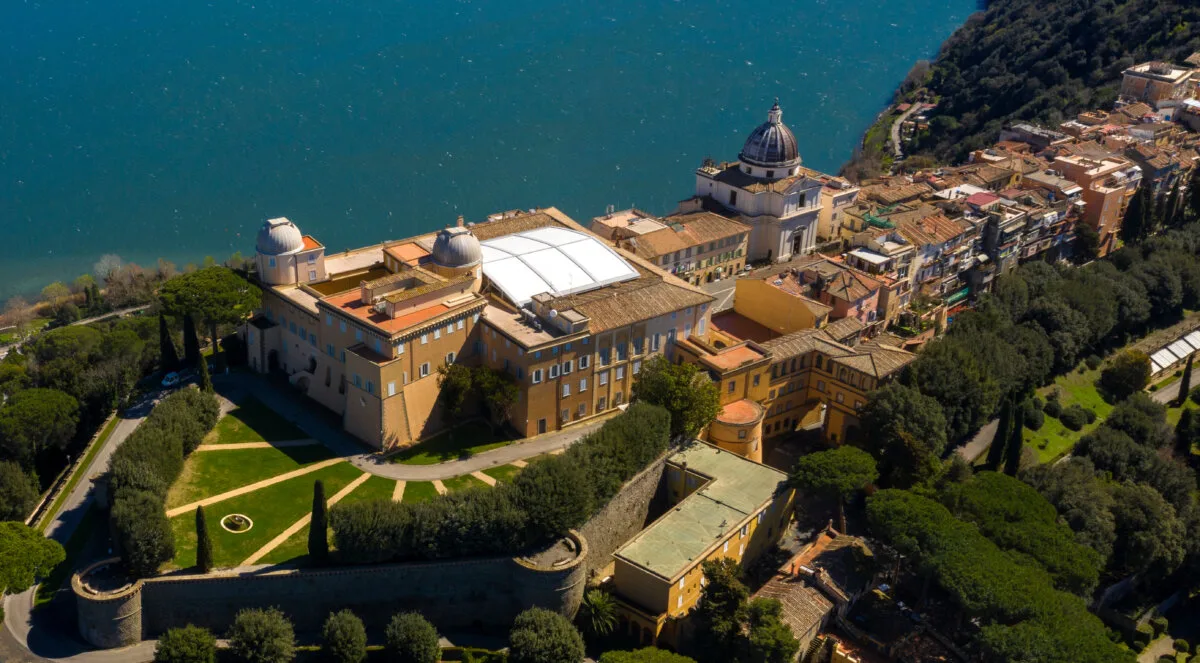
Address: Piazza della Libertà, 00073 Castel Gandolfo, Italy
Just forty minutes south of Rome is the small town of Castel Gandolfo. Located on the shores of Lake Albano, this tiny, unassuming town is famous for being the home of the Pope’s summer residence. This papal palace is stunning and worth the drive out of the city.
The Vatican acquired the summer residence in 1596 as a debt owed by a wealthy family. A few years ago, the villa was opened to the public for the first time and is now a museum.
Visitors can tour this stunning palace, including the papal portrait gallery and the apartments that Popes and their staff would stay in throughout the centuries. There are also a few cool pope mobiles for visitors to admire.
One of the most stunning parts of the papal residence is the Barberini Gardens. The gardens span a whopping 74 acres and date back to the time of Roman Emperors. Book a guided tour like this one, which includes admission into the papal residence and the Barberini Gardens.
29. Hadrian’s Villa
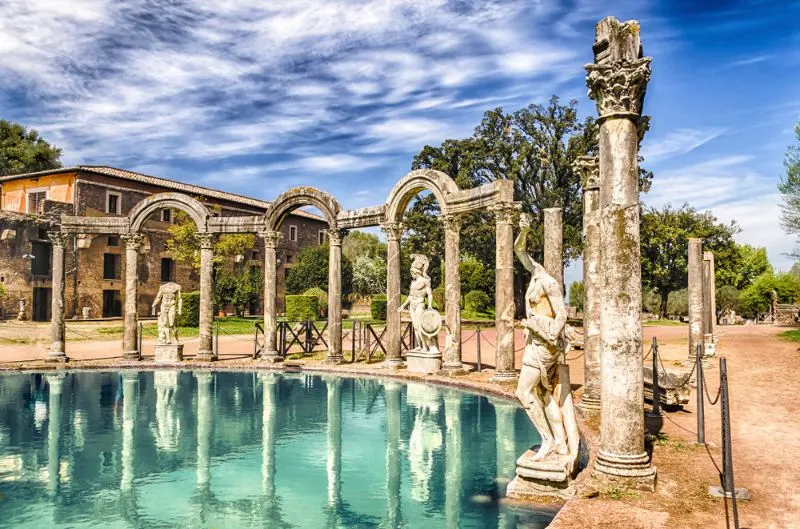
Address: Largo Marguerite Yourcenar, 1, 00010 Tivoli, Italy
A visit to Hadrian’s Villa will give you a first-hand perspective on what it was like to live as a Roman Emperor. This archaeological site was once the private retreat of Roman Emperor Hadrian, dating back to 120 AD, and it’s now a UNESCO World Heritage Site.
Hadrian’s Villa is located in Tivoli, about thirty minutes outside of Rome. The villa covers over 200 acres and is one of the largest villas of its time. It’s said that Hadrian was very skilled in astrology, was fascinated by other cultures, and was a great traveler.
Today, visitors can explore the ruins of Hadrian’s Villa, including the baths, temples, and gardens. There is also a museum on site, which contains many artifacts at the villa. Because the grounds are in ruins, I highly recommend wearing comfortable shoes and clothing.
To visit the villa from Rome, you’ll need to take a bus to Tivoli and an eventual shuttle service that runs to the villa unless you plan to rent a car. If you’re looking for a more stress-free visit to this historic landmark, hop on a guided tour of Hadrian’s Villa that includes transportation from Rome.
See Related: Top Reasons to Travel to Italy
30. Day Trip to Pompeii
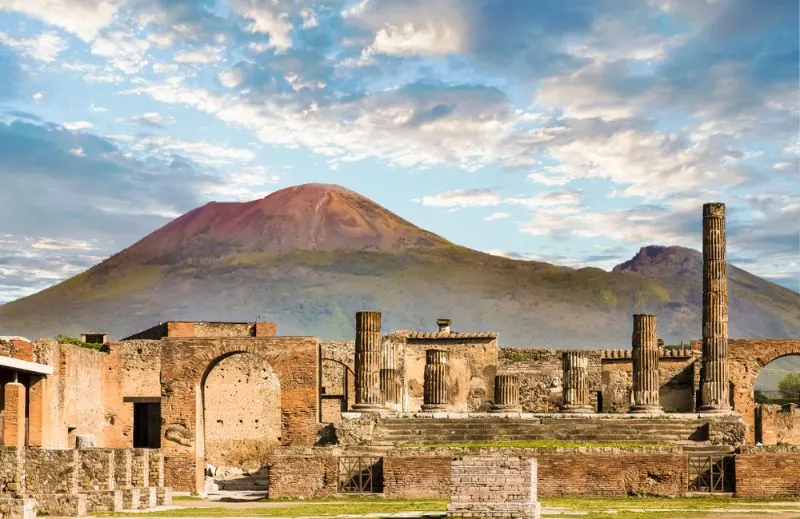
While Rome is a beautiful city with plenty to see and do, sometimes it’s nice to get out of the city and explore the surrounding area. If you have time during your trip, I highly recommend a day trip to Pompeii.
Pompeii is an ancient city that was destroyed by a volcanic eruption in 79 AD. The city was preserved thanks to the layers of ash that covered it, and today visitors can explore the ruins of Pompeii.
It’s a fascinating place to visit and learn about Roman life. I could seriously spend an entire day walking through the amazingly well-preserved ruins of this ancient city.
Pompeii is filled with preserved stores, villas of wealthy families, and incredible pottery and other stonework. It’s amazing to see how innovative this ancient civilization was.
Pompeii can be reached by car or train from Rome. If you don’t want to complicate logistics and prefer to have an expert guide, I highly recommend booking this day trip tour.
31. Day trip to the Amalfi Coast
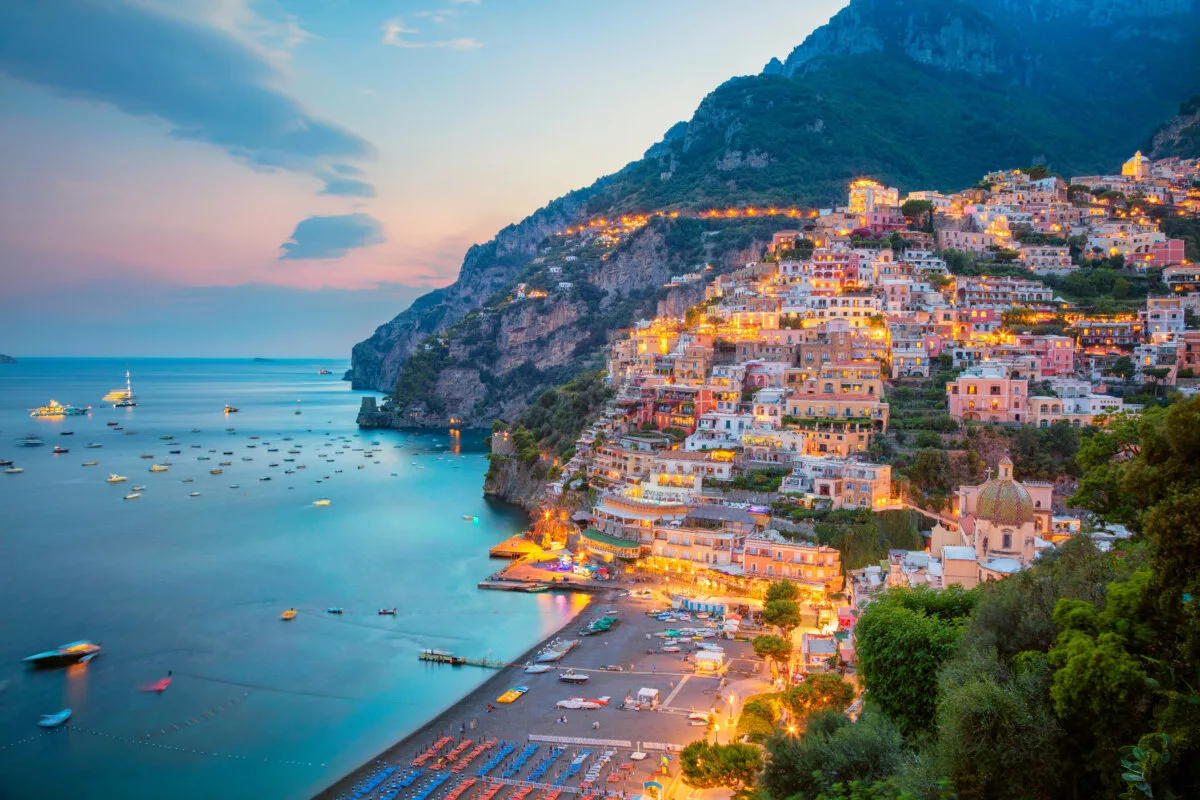
The Amalfi Coast is a dazzling stretch of coastline along the Mediterranean Sea, and it’s one of the most beautiful places in Italy. The towns of Amalfi, Positano, and Ravello are particularly lovely, and visitors can enjoy stunning views, great food, and plenty of shopping.
If you’re driving yourself down the Amalfi, start your journey early and be prepared for some very windy roads. If you’re not comfortable driving on small, windy roads, it’s definitely worth going on a tour instead.
I preferred driving ourselves because I liked going at our own pace and being over to pull off wherever we wanted. Then again, I wasn’t driving (thanks, hubby, you’re the best!).
At the end of the Amalfi Coast is the town of Amalfi. This colorful town is gorgeous and worth the long journey. Reward yourself with some gelato and a dip in the refreshing sea before heading back to Rome!
32. Day trip to Tuscany
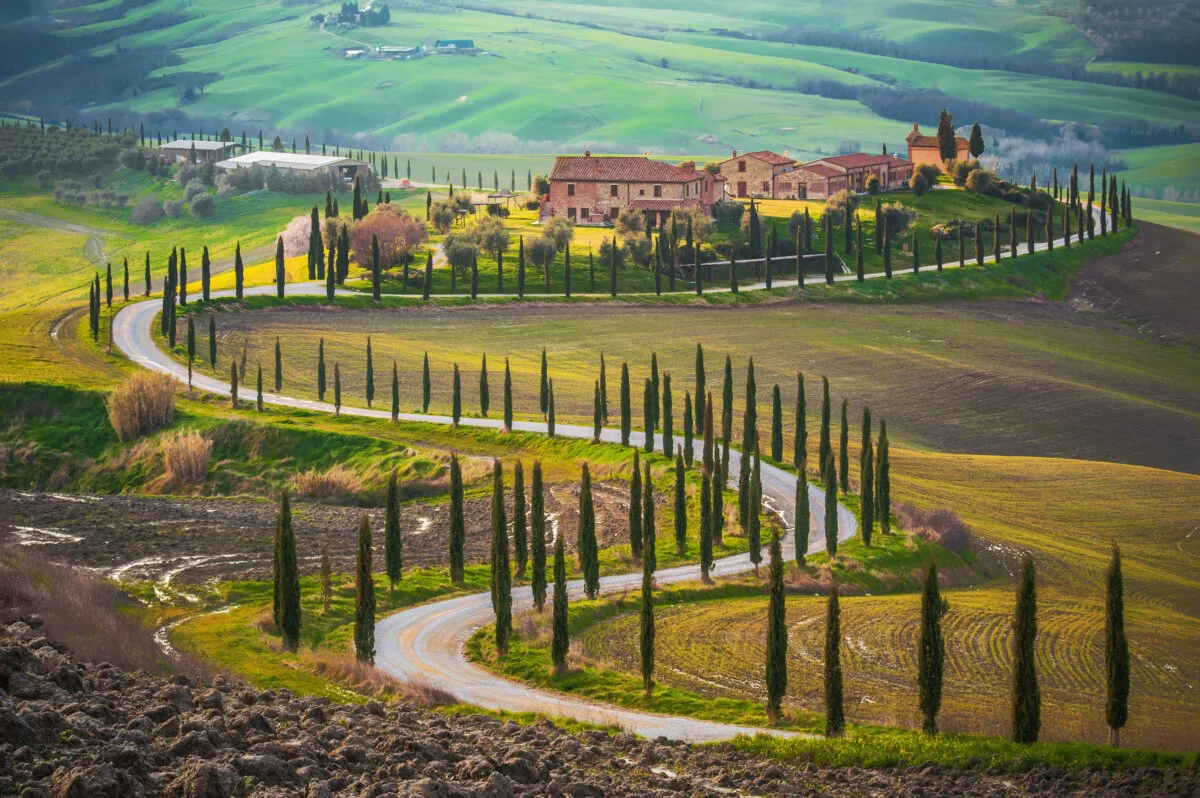
Tuscany is a region in central Italy known for its beautiful rolling hills and vineyards. The town of Florence is the capital of Tuscany, and it is home to some of the most famous art museums in the world. If you’re interested in art or history, a day trip to Florence is necessary.
If you’re looking for a more active day trip, this guided one-day tour in Tuscany is a great option. You’ll explore the Tuscan countryside, visit a winery, and enjoy a traditional Italian lunch. This is a great way to experience what Tuscany has to offer.
If you’re going on your own, you’ll definitely want to stop in Florence to take in all of the stunning art and history. If you have more time, I highly suggest visiting other Tuscan cities like San Gimignano, Siena, and Pisa. No matter which places you choose to visit, you can take in the enchanting rolling hills of Tuscany during your journey.
FAQ
What is the best time of year to visit Rome?
The best time to visit Rome is between April and early November. Avoid visiting in July and August if you want to miss the largest crowds and scorching heat. All attractions in Rome will be open during this period, and you’ll be able to enjoy fantastic weather.
How do I get around Rome using public transportation?
Being extremely well-connected, Rome is quite easy to get around using public transportation. The same company operates all public buses, metros, aboveground trams, and light rail.
Therefore, if you purchase a 100-minute ticket from any metro ticket, it’s valid on any mode of transportation. It’s worth noting that the train to the main airport (Rome Fiumicino) is not reachable using this ticket; you must purchase a separate train ticket.
What is the dress code for visiting religious sites in Rome?
Generally speaking, you will want to have your shoulders and knees covered when visiting any religious sites in Rome. The Vatican is super strict regarding dress code – they will turn you away if you’re not modest enough. If you run hot and don’t want to sweat buckets while visiting in the summer, I recommend wearing a midi skirt on the days you want to visit these sites and carrying a large scarf to drape around your shoulders.
What are some lesser-known attractions or hidden gems in Rome?
As one of the most visited cities in the world, Rome is chock-full of popular tourist attractions. If you’re looking for attractions in Rome that are not so busy, Largo di Torre Argentina, the Roman Catacombs, and Janiculan Hill are fantastic options.
Is it necessary to purchase tickets in advance for popular tourist attractions?
While not a requirement, booking tickets in advance for popular tourist attractions is highly recommended. Otherwise, you’ll risk waiting in long lines and wasting time that you could be using to explore the rest of Rome. Tickets for attractions like the Colosseum and the Vatican Museums should be purchased in advance.
Related Resources
